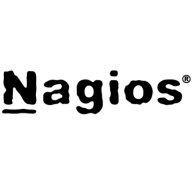

Nagios Core and ServiceNow IT Operations Management compete in the IT operations control and management category. ServiceNow seems to have the upper hand due to its comprehensive features and integration options despite its higher cost.
Features: Nagios Core offers open-source status, extensive customization, and distributed monitoring capabilities, making it suited for users seeking a cost-effective monitoring solution. ServiceNow IT Operations Management provides seamless integration of IT functionalities, comprehensive service management across platforms, and enhanced user-friendly capabilities, appealing to larger enterprises.
Room for Improvement: Nagios Core could benefit from a more user-friendly interface, centralized management, and web-based setup options to simplify configuration. ServiceNow IT Operations Management could improve by reducing its pricing, offering better cloud service integration for smaller enterprises, and refining its discovery feature to enhance coverage.
Ease of Deployment and Customer Service: Nagios Core relies on on-premises deployment and community-based support, which can limit user access to formal assistance. ServiceNow IT Operations Management offers flexible deployment options, including cloud and hybrid setups, supported by strong customer service and technical support for greater accessibility.
Pricing and ROI: Nagios Core is a free and open-source solution, providing a budget-friendly approach with potential cost savings and ROI through effective monitoring. ServiceNow IT Operations Management is more expensive but offers value with its all-in-one approach and advanced features, making the investment worthwhile for businesses needing enhanced functionality and support.
It reduced staffing needs from four full-time staff to fewer due to automation.
For minor issues, the team takes a month's time to provide a fix.
Solve our issues effectively.
The response time of technical support could be improved.
The solution is scalable.
ServiceNow ITOM scales very well to small and medium businesses.
It integrates with every single tool, even external tools.
I tried many other solutions at work, however, in terms of Nagios, I haven't seen any disruption or downtime.
It helps us create custom dashboards and provides excellent search functionality where we can search for any issues or errors that have occurred and take corrective action before it impacts the users.
Since it is a Platform as a Service (PaaS) or Software as a Service (SaaS) solution, I consider the stability to be very high, rating it ten out of ten.
The licensing is complex.
A more streamlined configuration process tailored to use cases and industry would be beneficial.
ServiceNow IT Operations Management is not very affordable for SMB customers.
It is definitely high-priced compared to other products available in the same domain in the market.
The pricing model offers scaling where not everything consumes a license equally, providing more value across different business areas.
ServiceNow's pricing is expensive.
It has a very handy dashboard, providing live alerts and visibility for everything.
The performance analytics of ServiceNow was especially beneficial for setting thresholds, aggregating, and correlating infrastructure data.
ServiceNow IT Operations Management influences ITSM processes by automating them and aiding in detecting and resolving IT issues to improve performance, reliability, and uptime.
They provide seamless integration of ITOM with their other modules such as ITSM, where we can leverage the AIs for discovery, perform impact analysis, which essentially helps to enhance the overall IT operations and reduce the downtime and MTTR.
| Product | Market Share (%) |
|---|---|
| ServiceNow IT Operations Management | 2.1% |
| Nagios Core | 3.1% |
| Other | 94.8% |


| Company Size | Count |
|---|---|
| Small Business | 20 |
| Midsize Enterprise | 11 |
| Large Enterprise | 22 |
| Company Size | Count |
|---|---|
| Small Business | 12 |
| Midsize Enterprise | 5 |
| Large Enterprise | 26 |
This is IT infrastructure monitoring's industry-standard, open-source core. Free without professional support services.
ServiceNow IT Operations Management (ITOM) is a cloud management and infrastructure tool that facilitates the administrative and development process of creating, planning, and operating digital services, technology, application requirements, and components for organizations. Service Now ensures effectiveness, performance, and availability throughout an organization's processes and services.
ServiceNow ITOM will help organizations facilitate consistent policies with regard to deployment, support, and services to ensure trustworthiness and quality of service (QoS). ServiceNow ITOM will ensure that all applications, services, and infrastructure are consistently available and stable.
ServiceNow IT Operations Management Features
ServiceNow IT Operations Management Benefits
ServiceNow ITOM enables organizations to become robust, strategic operations able to successfully anticipate issues before they have an impact on the organization. Organizations that use ServiceNOw ITOM will be able to easily automate workflows and improve how their IT teams communicate and work together to deliver successful outcomes and maintain productivity and profitability 24/7.
Reviews from Real Users
“With this solution, operational costs will be reduced. Your maintenance cost will be reduced when you use the item model. You will deliver a fast solution to the customers. If something happens on the server-side or router-side, it will be immediately caught. Efficiencies are improved. “ - Rupesh J., Solutions Architect at Globant
“It has been very useful for tracking. It has evolved a lot over time, and there is a single pane of glass where you can track and see everything.” - Uday T., Project Manager at MindTree
We monitor all IT Infrastructure Monitoring reviews to prevent fraudulent reviews and keep review quality high. We do not post reviews by company employees or direct competitors. We validate each review for authenticity via cross-reference with LinkedIn, and personal follow-up with the reviewer when necessary.